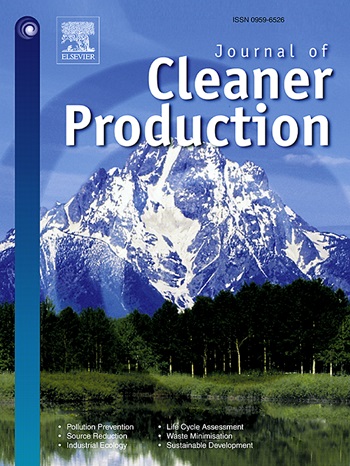Research on the micro-mechanism and factors of hot recycled asphalt binder cracking
IF 9.7
1区 环境科学与生态学
Q1 ENGINEERING, ENVIRONMENTAL
引用次数: 0
Abstract
The poor low-temperature performance of recycled asphalt is the primary cause of the recycled asphalt disease. However, further strengthening is required to analyze the molecular-level cracking of recycled asphalt. This article presented a comprehensive investigation of the cracking phenomenon of recycled asphalt at both the macro and micro levels. This was achieved through the utilization of experimental tests and molecular dynamics simulations. In this study, pressure-aged asphalt was subjected to 40 hours of aging. The aged asphalt was divided into three groups: 30% RAP (reclaimed asphalt pavement) recycled asphalt, 50% RAP recycled asphalt, and 70% RAP recycled asphalt. The three groups were then analyzed in terms of three major indexes. Linear amplitude scanning (linear amplitude sweep, LAS) was conducted on the three groups. The mechanical response law of asphalt was obtained, and it was found that the coefficient of strength of recycled asphalt increased with the increase of RAP dosage. At the same time, the fracture energy density decreased subsequently. Furthermore, the fracture energy density of aged asphalt was 7% lower than base asphalt's. Subsequently, this study examined the four fractions and C=O and S=O functional groups of five types of asphalt and constructed the molecular structures and models of stable base asphalt and aged asphalt. Subsequently, this article constructed a fusion model of new and old asphalt, analyzed the fusion process of new and old asphalt, and studied the factors affecting the blending degree of new and old asphalt. Finally, the factors affecting the cracking performance of rejuvenated asphalt, including the blending degree, the content of the four fractions, and the addition of the rejuvenator, were investigated. The impact of each influencing factor on the cracking performance of recycled asphalt was analyzed from multiple perspectives. In conclusion, the findings of this study provide a valuable guide for interpreting the tensile properties of reclaimed asphalt and the influence of rejuvenators.热再生沥青胶结料开裂的微观机理与因素研究
再生沥青低温性能差是造成再生沥青病害的主要原因。然而,还需要进一步加强对再生沥青分子级开裂的分析。本文从宏观和微观两个层面对再生沥青的开裂现象进行了全面研究。这是通过利用实验测试和分子动力学模拟实现的。在这项研究中,对压力老化的沥青进行了 40 小时的老化。老化沥青分为三组:30% RAP(再生沥青路面)再生沥青、50% RAP 再生沥青和 70% RAP 再生沥青。然后从三个主要指标对这三组进行分析。对三组沥青进行线性振幅扫描(线性振幅扫描,LAS)。得出了沥青的力学响应规律,发现再生沥青的强度系数随 RAP 用量的增加而增加。同时,断裂能密度随之降低。此外,老化沥青的断裂能密度比基层沥青低 7%。随后,本研究检测了五种沥青的四种组分和 C=O 与 S=O 官能团,并构建了稳定的基质沥青和陈化沥青的分子结构和模型。随后,本文构建了新老沥青的融合模型,分析了新老沥青的融合过程,研究了影响新老沥青掺合度的因素。最后,研究了影响再生沥青开裂性能的因素,包括掺和度、四种馏分的含量和再生剂的添加量。从多个角度分析了各影响因素对再生沥青开裂性能的影响。总之,本研究的结果为解释再生沥青的拉伸性能和再生剂的影响提供了有价值的指导。
本文章由计算机程序翻译,如有差异,请以英文原文为准。
求助全文
约1分钟内获得全文
求助全文
来源期刊

Journal of Cleaner Production
环境科学-工程:环境
CiteScore
20.40
自引率
9.00%
发文量
4720
审稿时长
111 days
期刊介绍:
The Journal of Cleaner Production is an international, transdisciplinary journal that addresses and discusses theoretical and practical Cleaner Production, Environmental, and Sustainability issues. It aims to help societies become more sustainable by focusing on the concept of 'Cleaner Production', which aims at preventing waste production and increasing efficiencies in energy, water, resources, and human capital use. The journal serves as a platform for corporations, governments, education institutions, regions, and societies to engage in discussions and research related to Cleaner Production, environmental, and sustainability practices.
 求助内容:
求助内容: 应助结果提醒方式:
应助结果提醒方式:


